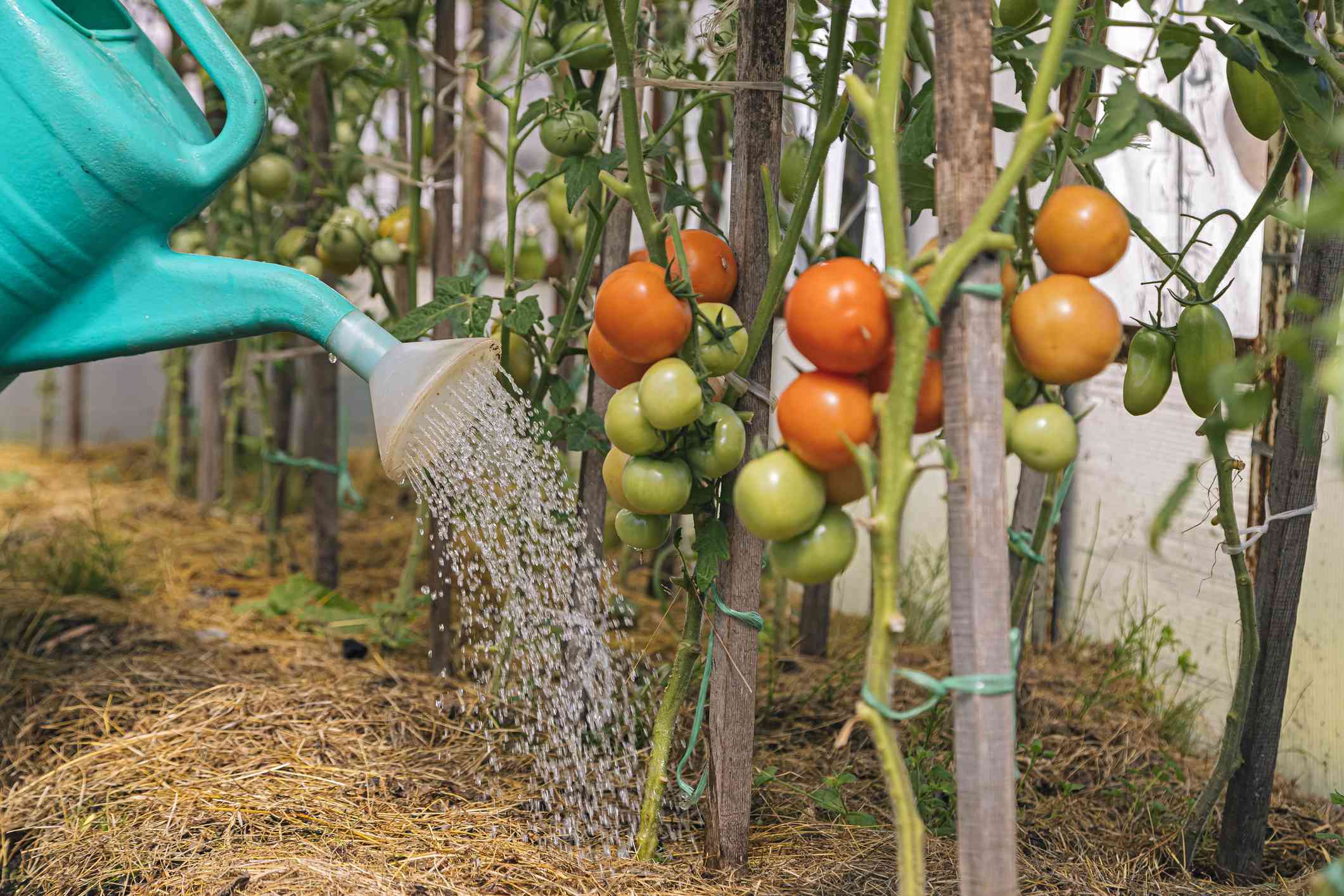Determining the optimal watering schedule for tomato plants can be a perplexing task for any gardener. The right balance between underwatering and overwatering is crucial to ensure optimal growth and yield. In this article, you will explore the key factors to consider when deciding when to water your tomato plants, including weather conditions, soil moisture levels, and the specific requirements of different tomato varieties. By understanding these factors, you will be equipped with the knowledge to make informed decisions and foster healthy tomato plants in your garden.

Factors to Consider
Type of Soil
The type of soil you have plays a significant role in determining the watering needs of your tomato plants. Different soil types have varying drainage capabilities, which directly affects how often and how much water your plants require. Sandy soil, for example, drains water quickly and may need more frequent watering to keep the plants adequately hydrated. In contrast, clay soil retains water for longer periods, and therefore, the watering frequency should be adjusted accordingly. Understanding your soil type will help you tailor your watering routine to meet the specific needs of your tomato plants.
Climate and Weather Conditions
The climate and weather conditions in your region are essential considerations when watering tomato plants. Hot and dry climates typically result in faster evaporation and higher water requirements. In such conditions, you may need to increase the frequency or adjust the timing of your watering to prevent the soil from drying out. On the other hand, cooler and more humid climates may necessitate less frequent watering as the soil retains moisture for longer periods. Additionally, periods of heavy rainfall can also affect the watering needs of your tomato plants, so it is important to monitor the weather forecast and make appropriate adjustments to your watering routine.
Stage of Growth
The stage of growth of your tomato plants is another crucial factor to consider when determining their watering needs. Seedlings and young transplants, for instance, require more frequent watering to establish their root systems and ensure proper growth. As the plants mature, they develop deeper roots and have a larger capacity to absorb water from the soil. At this stage, the watering frequency can be adjusted, but it is important to maintain consistent moisture to support healthy fruit formation. Understanding the different growth stages of your tomato plants will enable you to provide them with the appropriate amount of water throughout their development.
Container vs. Ground Planting
The method of planting your tomato plants, whether in containers or directly in the ground, can also affect their watering requirements. Container plants generally have limited soil volume, leading to quicker drainage and more frequent watering needs. It is important to choose an appropriately sized container with adequate drainage to ensure the plants receive enough water without becoming waterlogged. Ground-planted tomato plants, on the other hand, have the advantage of accessing natural water sources and better root development. While they may require less frequent watering, it is still important to monitor the soil moisture levels and provide water as needed.
Signs of Watering Needs
Wilting Leaves
Wilting leaves are a clear indication that your tomato plants need watering. When there is insufficient water available to the plants, they are unable to maintain turgidity, leading to wilting. This usually occurs on hot days or when the soil has dried out. If you notice wilting leaves, it is important to provide water immediately to prevent further stress on the plants and promote their recovery.
Dry Soil
Dry soil is another sign that your tomato plants require watering. By regularly checking the soil moisture level, you can determine if it is time to water. Inserting your finger into the soil to a depth of about two inches will give you an idea of whether the soil is dry or moist. If the soil feels dry at this depth, it is a clear indication that your plants need watering. It is important to note that the topsoil may appear dry even if the soil lower down is still moist, so it is essential to check the moisture at different depths.
Yellowing Leaves
Yellowing leaves can signal both underwatering and overwatering issues. When the soil lacks sufficient moisture, the plants will start to exhibit yellowing leaves as a way of conserving water and redirecting resources to essential areas. However, if the yellowing leaves are accompanied by mushy or waterlogged soil, it might indicate overwatering and poor soil drainage. Careful observation and assessment of the overall plant health and soil conditions will help determine the appropriate watering adjustments required.
Stunted Growth
Stunted growth is a common consequence of inadequate watering. When tomato plants do not receive enough water, their growth rate slows down, resulting in stunted development. This can affect the overall productivity and health of the plants, leading to reduced fruit yield. Regular monitoring of your plants’ growth can help identify if stunted growth is occurring due to insufficient watering, prompting the need for adjustments in your watering routine.
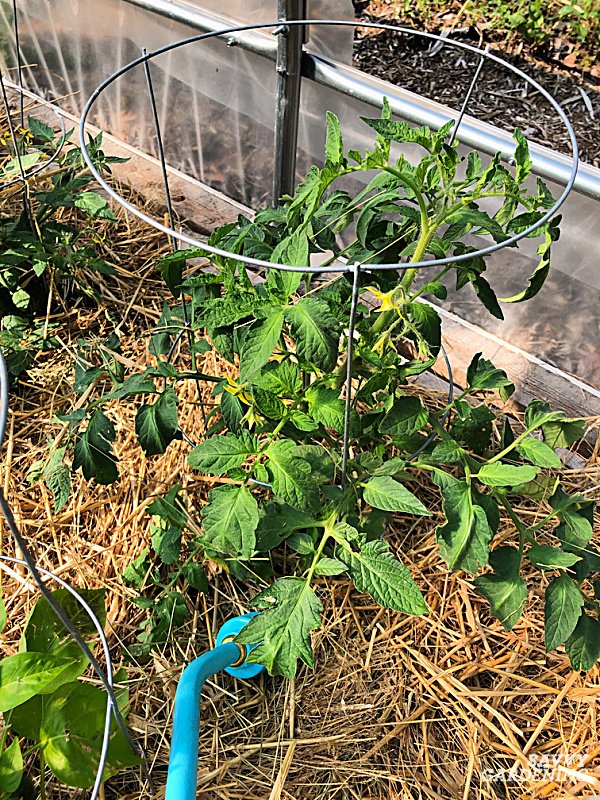
General Watering Tips
Watering Frequency
Determining the appropriate watering frequency for your tomato plants is crucial to their overall health and productivity. In general, tomato plants require consistent soil moisture, but it is important to avoid both overwatering and underwatering. Regularly check the soil moisture levels by inserting your finger or a moisture meter into the soil to gauge when it is time to water. The frequency of watering will vary depending on the factors discussed earlier, such as soil type, climate, and growth stage. Maintaining a proper watering schedule will help ensure optimal plant growth and fruit production.
Watering Depth
Proper watering depth is essential for encouraging healthy root development in tomato plants. Shallow watering results in restricted root growth as the roots predominantly stay close to the surface in search of moisture. To promote deep root growth, it is recommended to water your tomato plants deeply, allowing the water to penetrate at least six to eight inches into the soil. This encourages the roots to grow deeper, enhancing the plants’ overall stability and ability to access water and nutrients.
Time of Day
Choosing the right time of day to water your tomato plants can greatly impact their water absorption and overall health. It is generally recommended to water early in the morning or late in the afternoon when the temperatures are cooler and the evaporation rate is lower. This allows the plants to absorb water more effectively without losing excessive moisture to evaporation. Avoid watering during the hottest parts of the day, as the water droplets can magnify sunlight and potentially damage the leaves.
Consistent Moisture
Consistency in maintaining soil moisture is key to the healthy growth of tomato plants. Fluctuations in soil moisture levels can lead to stress and negatively impact plant growth and fruit production. Aim to provide consistent moisture by watering deeply and regularly, ensuring that the soil remains moist but not saturated. Avoid allowing the soil to completely dry out between watering sessions, as this can stress the plants and affect their overall productivity.
Watering Established Tomato Plants
Deep Watering
As tomato plants mature and develop deeper root systems, deep watering becomes crucial for their overall health and productivity. Deep watering involves applying water directly to the root zone, allowing it to penetrate deep into the soil. This promotes root growth and helps the plants access water and nutrients from greater depths. To deep water established tomato plants, slowly apply water at the base of the plants, allowing it to soak into the soil rather than running off the surface.
Watering in Hot Weather
Hot weather increases the evaporative demand on tomato plants, making it important to water them adequately during such periods. The increased heat and evaporation rates can quickly dry out the soil, leading to heat stress and water deficiency in the plants. To counteract the effects of hot weather, increase the frequency of watering sessions, ensuring that the soil remains consistently moist. Consider using mulch to help retain soil moisture and provide shade to the roots.
Watering in Cold Weather
While tomato plants generally require less water during cold weather, it is still important to ensure they receive adequate moisture. Cold temperatures can cause water loss through evaporation and can affect the plants’ ability to absorb water effectively. Monitor the soil moisture levels closely during colder periods and adjust the watering frequency accordingly. This will help prevent the plants from experiencing drought stress while avoiding waterlogging and root rot caused by overwatering.
Adjusting Frequency
The watering frequency for established tomato plants may need to be adjusted periodically based on their specific needs and environmental conditions. Factors such as temperature changes, rainfall patterns, and overall plant health should be taken into account. Regularly observe your plants for signs of water stress, such as wilting or yellowing leaves, and adjust the watering frequency accordingly. Remember to strike a balance between providing enough water to prevent stress and avoiding excess water that can lead to root rot or other issues.
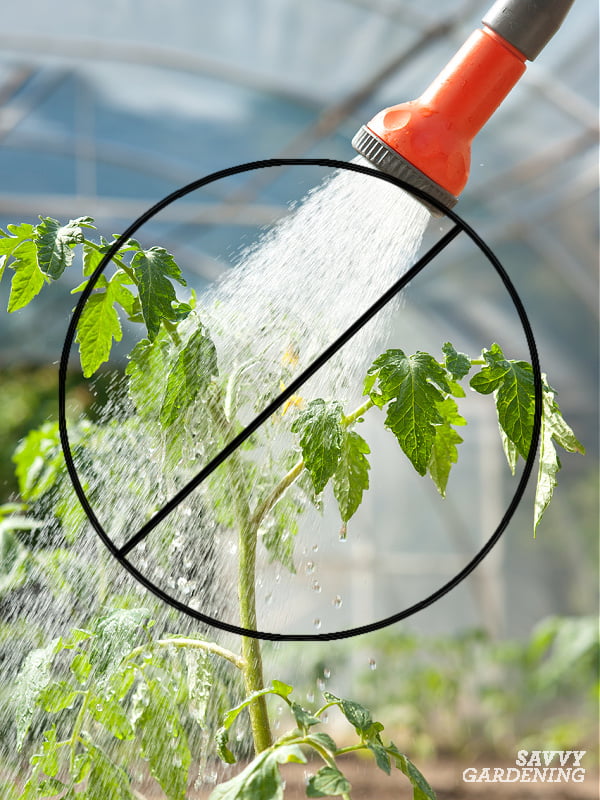
Watering Tomato Seedlings or Transplants
Initial Watering
The initial watering of tomato seedlings or transplants is crucial for their establishment and root development. Prior to planting, thoroughly water the soil to ensure it is moist and ready to receive the seedlings or transplants. After planting, provide a generous amount of water to settle the soil and aid in supporting the seedlings’ or transplants’ transition. This initial watering helps to hydrate the roots and minimizes stress on the plants as they adapt to their new environment.
Establishing Roots
During the early stages of growth, it is important to focus on establishing a strong root system for your tomato seedlings or transplants. Adequate moisture in the soil is essential for root growth, as it allows the roots to absorb water and nutrients. Regularly monitor the soil moisture levels and water as needed to maintain consistent moisture around the root zone. As the plants develop, continue to encourage deep root growth by gradually adjusting the watering routine to water less frequently but more deeply.
Gradual Adjustment
Gradually adjusting the watering routine for tomato seedlings or transplants is essential to ensure their successful transition and adaptation to their growing environment. As the plants establish their root systems and become more resilient, it is important to reduce the frequency of watering to encourage deeper root growth. However, it is crucial to avoid sudden reductions in watering as this can cause stress and hinder their growth. Gradually decrease the frequency while monitoring the plants’ response, making adjustments as necessary.
Avoiding Overwatering
While providing sufficient moisture is important for the growth of tomato seedlings or transplants, it is equally crucial to avoid overwatering. Overwatering can lead to waterlogged soil, suffocating the roots and increasing the risk of root diseases. To prevent overwatering, carefully monitor the soil moisture levels and allow the topsoil to dry out slightly between watering sessions. This encourages the roots to seek out water deeper in the soil, promoting stronger and more extensive root development.
Watering Considerations for Container Tomato Plants
Container Size and Drainage
Container size and drainage are crucial considerations when watering tomato plants grown in containers. The size of the container directly affects the available soil volume and, consequently, the moisture-holding capacity. Larger containers generally retain more water and require less frequent watering compared to smaller containers. Additionally, proper drainage is essential to prevent waterlogging and root rot. Ensure that your containers have drainage holes and consider using a well-draining potting mix to promote adequate water flow.
Watering Frequency
Container tomato plants typically require more frequent watering compared to those planted in the ground. Due to the limited soil volume, water evaporates more rapidly, necessitating more frequent replenishment. Regularly check the moisture level of the potting mix by inserting your finger or a moisture meter into the soil. If the top inch feels dry, it is time to water. Be mindful not to overwater, as excess drainage can wash away valuable nutrients and lead to nutrient deficiencies.
Monitoring Moisture Levels
Monitoring the moisture levels in container-grown tomato plants is essential to maintain their health and productivity. As the soil in containers dries out more quickly, it is necessary to regularly check the moisture content. This can be done by inserting your finger into the soil to assess the moisture level at various depths. Adjust the watering frequency accordingly, ensuring that the plants receive enough water without becoming waterlogged.
Fertilizer Dilution
When watering container tomato plants, it is important to consider the interaction between water and fertilizer. Excessive use of concentrated fertilizer solutions can lead to nutrient imbalances and root damage. To avoid these issues, dilute the fertilizer according to the manufacturer’s instructions and apply it alongside regular watering. This allows for gradual nutrient absorption by the plants and reduces the risk of fertilizer burn. Be mindful of the specific nutrient requirements of your tomato plants and adjust the fertilizer dilution accordingly.
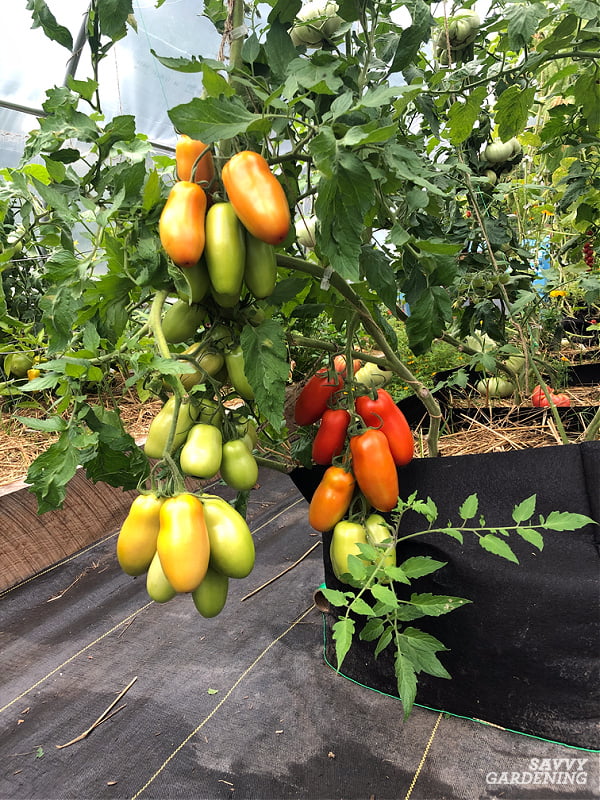
Watering During Tomato Flowering and Fruit Formation
Balancing Moisture Needs
Proper watering during tomato flowering and fruit formation is critical for ensuring successful pollination and optimal fruit development. During this stage, it is important to maintain consistent soil moisture to support healthy floral development and fruit set. Inadequate watering can lead to blossom drop and poor fruit development, while excessive watering may result in fruit cracking. Strive to strike a balance by monitoring the soil moisture levels and adjusting the watering frequency to meet the needs of your tomato plants.
Preventing Blossom End Rot
Blossom end rot is a common disorder characterized by a dark, sunken area at the blossom end of the fruit. It is often caused by calcium deficiency in the developing fruit due to inconsistent or inadequate watering, leading to poor calcium uptake. To prevent blossom end rot, maintain consistent soil moisture levels by providing regular and adequate water. This ensures that the plants can efficiently transport calcium to the developing fruit, reducing the risk of this disorder.
Avoiding Stress
Stress can negatively impact tomato plants during flowering and fruit formation, leading to reduced productivity. Water stress, in particular, can affect pollination, flower development, and fruit set. It is important to provide adequate water to prevent stress and support optimal plant health. Regularly monitor the soil moisture levels and adjust the watering routine as needed to avoid water stress, promoting healthy flowering and fruit formation.
Maintaining Consistency
Consistency in watering practices is crucial during the crucial stages of tomato flowering and fruit formation. Fluctuations in soil moisture levels can negatively impact fruit development and overall plant health. Stick to a regular watering schedule, ensuring that the soil remains consistently moist but not waterlogged. Avoid sudden changes in watering frequency or amount, as this can lead to stress and hinder fruit development. Consistent watering provides a stable environment for the plants, supporting the healthy growth and production of high-quality tomatoes.
Watering Tips for Wet or Rainy Periods
Adjusting Watering Schedule
During wet or rainy periods, it is important to adjust your watering schedule to prevent excessive moisture in the soil. Excess water can lead to root suffocation and increased susceptibility to fungal diseases. Monitor the rainfall patterns and assess the soil moisture levels. If the soil is consistently wet, reduce or suspend watering until the excess moisture has drained away. Only resume regular watering when the soil has dried out to an appropriate level.
Monitoring Soil Drainage
Wet or rainy periods can pose challenges in maintaining proper soil drainage for tomato plants. It is crucial to monitor the soil drainage to prevent waterlogging, which can impede root function and promote the growth of harmful microorganisms. Ensure that your planting area has adequate drainage, and consider raising containers or using raised beds to improve drainage. Regularly check the soil moisture levels and take appropriate action if excess moisture is present.
Preventing Fungal Diseases
Wet or rainy conditions create favorable environments for the development and spread of fungal diseases in tomato plants. To prevent these diseases, it is important to practice good watering habits. Avoid overhead watering, as it can splash soil onto the leaves and promote disease transmission. Instead, water at the base of the plants to reduce leaf wetness and minimize the risk of fungal infections. Additionally, using organic mulch can help regulate soil moisture and provide a barrier against soil-borne fungal pathogens.
Using Mulch
Mulching is a beneficial practice during wet or rainy periods, as it helps regulate soil moisture and prevent excessive evaporation. Apply a layer of organic mulch, such as straw or wood chips, around the base of your tomato plants. This helps to retain soil moisture, reduce weed competition, and provide insulation against temperature fluctuations. When using mulch, ensure that it does not touch the stems of the plants, as this can create a moist environment conducive to diseases.
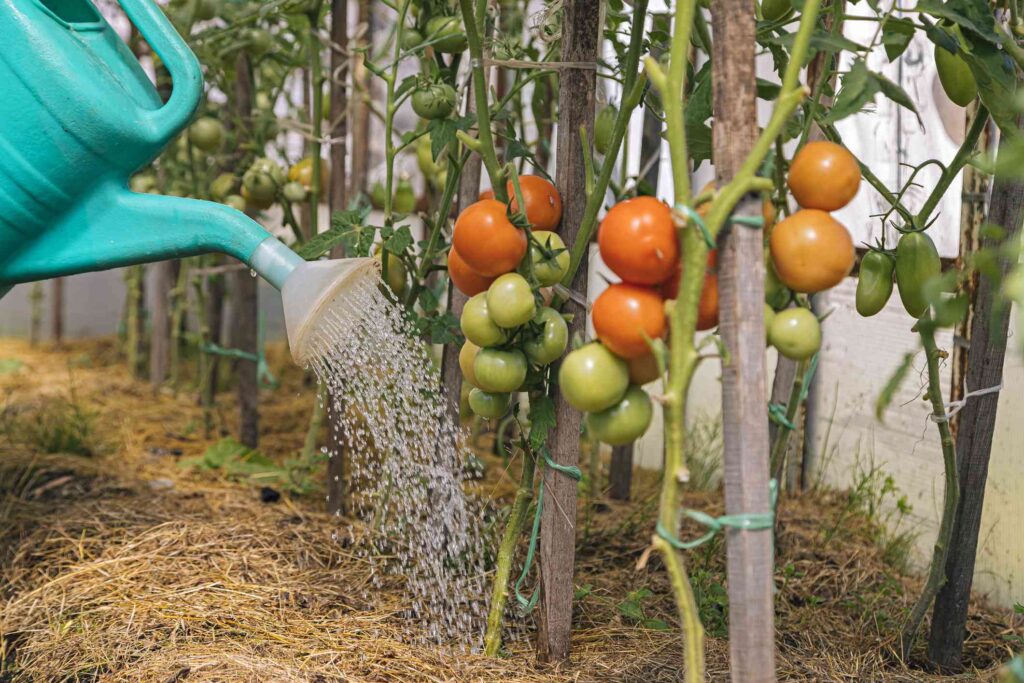
Observing Tomato Plant Responses
Monitoring Growth and Health
Regularly monitoring the growth and overall health of your tomato plants is crucial for identifying their watering needs. Observe the size and vigor of the plants, as healthy and well-watered plants tend to exhibit robust growth. Look for any signs of stress, such as wilting, yellowing leaves, or stunted growth. These can indicate inadequate watering or other underlying issues. By actively observing your plants, you can detect and address problems early on, ensuring their continued health and productivity.
Checking Soil Moisture
Checking the soil moisture levels is an essential part of observing tomato plant responses. By testing the soil moisture regularly, you can assess whether the plants are receiving adequate water. Monitor the moisture content at different depths and adjust your watering routine accordingly. If the soil feels consistently dry, it may indicate that the plants require more frequent watering. Conversely, if the soil is consistently wet, it may be necessary to reduce the watering frequency to prevent waterlogged conditions.
Assessing Leaf Condition
The condition of the leaves can provide valuable insights into the watering needs of your tomato plants. Healthy leaves should be vibrant green, whereas yellowing or browning leaves can signal watering issues. If the lower leaves are turning yellow or developing brown edges, it may indicate overwatering or poor drainage. Conversely, if the upper leaves are wilting or becoming crispy, it may indicate underwatering. Regularly inspecting the leaves can help you identify and address watering issues promptly.
Using Additional Indicators
In addition to observing growth, soil moisture, and leaf condition, there are additional indicators that can help you determine the watering needs of your tomato plants. Monitor the presence and intensity of fruit set, as water stress can affect fruit development and yield. In addition, consider the weight of the container or the dryness of the soil in-ground for container or ground-planted tomato plants, respectively. By incorporating these additional indicators into your observations, you can fine-tune your watering routine and ensure optimal plant health.
Conclusion
Watering tomato plants is a critical aspect of their care and cultivation. By considering factors such as the type of soil, climate, growth stage, and planting method, you can tailor your watering routine to meet the specific needs of your tomato plants. Signs of watering needs, such as wilting leaves, dry soil, yellowing leaves, and stunted growth, serve as valuable indicators for adjustments in watering frequency and depth. General watering tips, including watering frequency, depth, time of day, and consistent moisture, provide a solid foundation for effective watering practices. Further guidance is provided for watering established tomato plants, seedlings or transplants, container tomato plants, and during flowering and fruit formation. Tips for wet or rainy periods and observing tomato plant responses are also outlined to promote successful tomato cultivation. By applying these guidelines and closely monitoring your plants, you can ensure optimal water management, leading to healthy, vibrant tomato plants and abundant fruit production.
